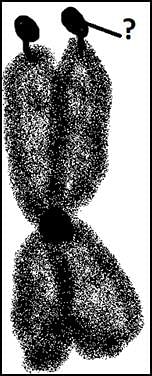Test: Nucleus & Chromosomes - NEET MCQ
30 Questions MCQ Test Biology Class 11 - Test: Nucleus & Chromosomes
Histone which links the nucleosomes together is called:-
| 1 Crore+ students have signed up on EduRev. Have you? Download the App |
Which is the primary constriction for every visible chromosome?
Nucleus controls the activity of cytoplasm by sending :-
Which of the following chromosomes are called diplotene chromosomes :-
Which type of chromosome has its centromere at its tip?
A few chromosomes have non-staining constrictions at a constant location. What are these constrictions called?
The chromatin material which takes darker stain in interphase is called:-
What are the disc shaped structures located on the sides of the centromere?
What is the number of chromosomes present in an oocyte?
Which among the following is incorrect about nucleus?
Which among the following is an incorrect statement about the structure of nucleus?
Part of chromosome after secondary constriction is called :–
Which among the following is incorrect about chromosomes?
Which type of chromosome has the centromere situated at the terminal position?
|
181 videos|361 docs|148 tests
|


















